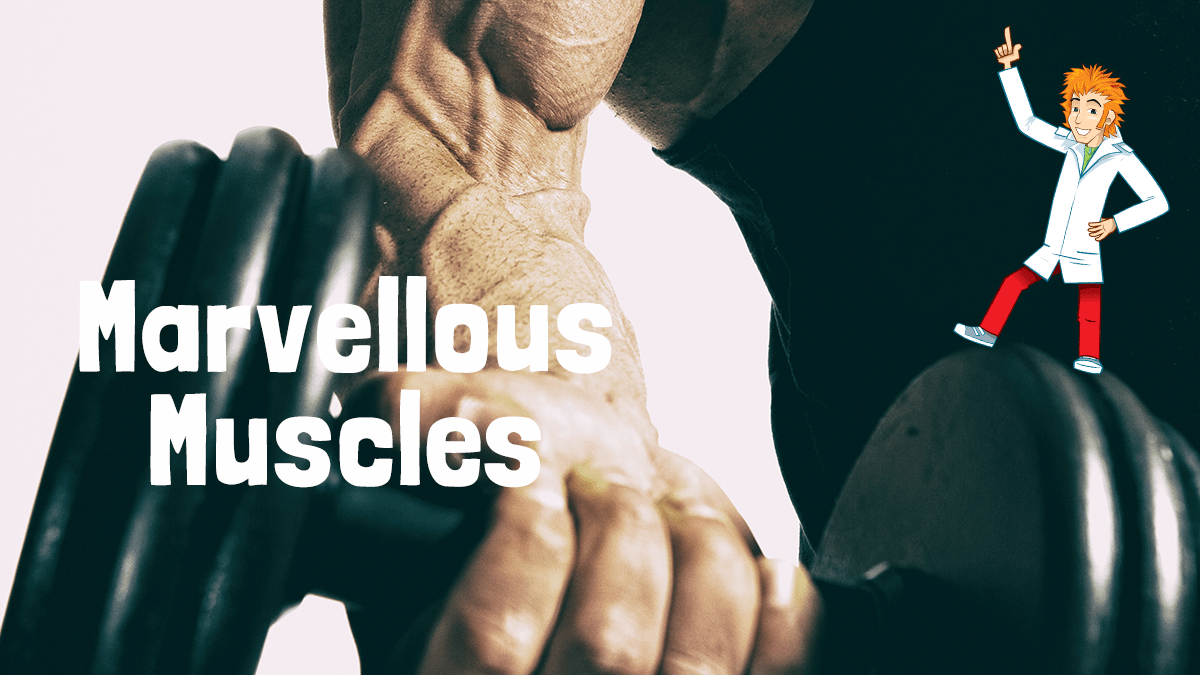 Hello biology buffs and welcome to my blog post.
Hello biology buffs and welcome to my blog post.
Today Nurse Nanobot and I have been making muscles – those springy stringy bits that hold everything together. But they do a lot more than that though.
Did you know that there are over 600 muscles in your body? They do everything from pumping blood to helping lift heavy things.
Press the play button above to listen to us explore the world of muscles and also read loads of interesting facts below!
Muscles are made from stretchy cells and fibres which make them very versatile. There are three main sorts of muscles.
Smooth muscle
This is sometimes known as involuntary muscle – can you guess why? That’s right – we have no control over this type of muscle. Our brains tell these muscles what to do without us having to think about it.
We use smooth muscle in our stomach and digestive system, where through contracting and relaxing, they move food on its journey through the body. They are also handy if you’re sick and need to throw up.
On a more positive note, I can also use smooth muscle in the eyes – the coloured bit of your eye, called the iris, is made of smooth muscle which lets your pupils (that’s the black hole in the middle) get bigger or smaller to control the light getting in.
Cardiac muscle
This is a thick muscle that makes the heart contract to pump blood around the body and then relax to let it back in.
Just like smooth muscle, cardiac muscle works all by itself without a thought from you.And over the average lifespan, the human heart will beat over 2.5 billion times!
Bodies are brilliant at doing stuff by themselves but that doesn’t mean you shouldn’t help them! Get yourself off the chair and take lots of exercise to help give your heart a work out and make those muscles super strong!
Skeletal muscles
These are the ones that you would think of when we say muscle – the ones that show how strong you are and let you kick a football into the goal. These are the muscles that we control. Unless you want to, your leg won’t bend to kick a ball or your arm to pinch yourself – ouch!
Muscles are held to the bones with the help of tendons – cords of tough tissue that are attached so well that when you contract one of your muscles, the tendon and bone move along with it.
Nurse Nanobot’s Orrible Old Anatomy Fact
Muscles might not sound as tough as bones but they can be preserved for hundreds of years – Egyptian mummies from 5,000 years ago were embalmed with their hearts inside and scientists are able to study them even today to see if their owners died of heart attacks.
And some bodies found in peat bogs in Europe are even older – the oldest found to date is around 8,000 years old and has its soft tissues preserved – although the bones have long since dissolved away – making a very wobbly floppy person!
 Disgusting Details
Disgusting Details
If you want to see one of your very own muscles, just stick out your tongue. Your tongue is a long, super flexible muscle and it’s the only one in your body that’s only attached at one end. The other end pokes out and moves about so you can talk and eat!
It’s odd to think that your tongue is a muscle! And talking of your face, you may not think of it as a muscular body part, but your face has plenty of muscles.
You can check them out next time you look in the mirror. Muscles in the face are attached to the facial bones at one end, and the skin of your face at the other. This allows you to contract your facial muscles just a tiny bit and make dozens of different kinds of faces. Even the smallest movement can turn a smile into a frown. You can raise your eyebrow to look surprised or wiggle your nose..
You can listen to Professor Hallux on:
- Fun Kids Radio
- iTunes
- RSS
- or listen to the series below!




 Fun Kids is on DAB Digital Radio in the UK!
Fun Kids is on DAB Digital Radio in the UK! 


 Listen online -
Listen online - 